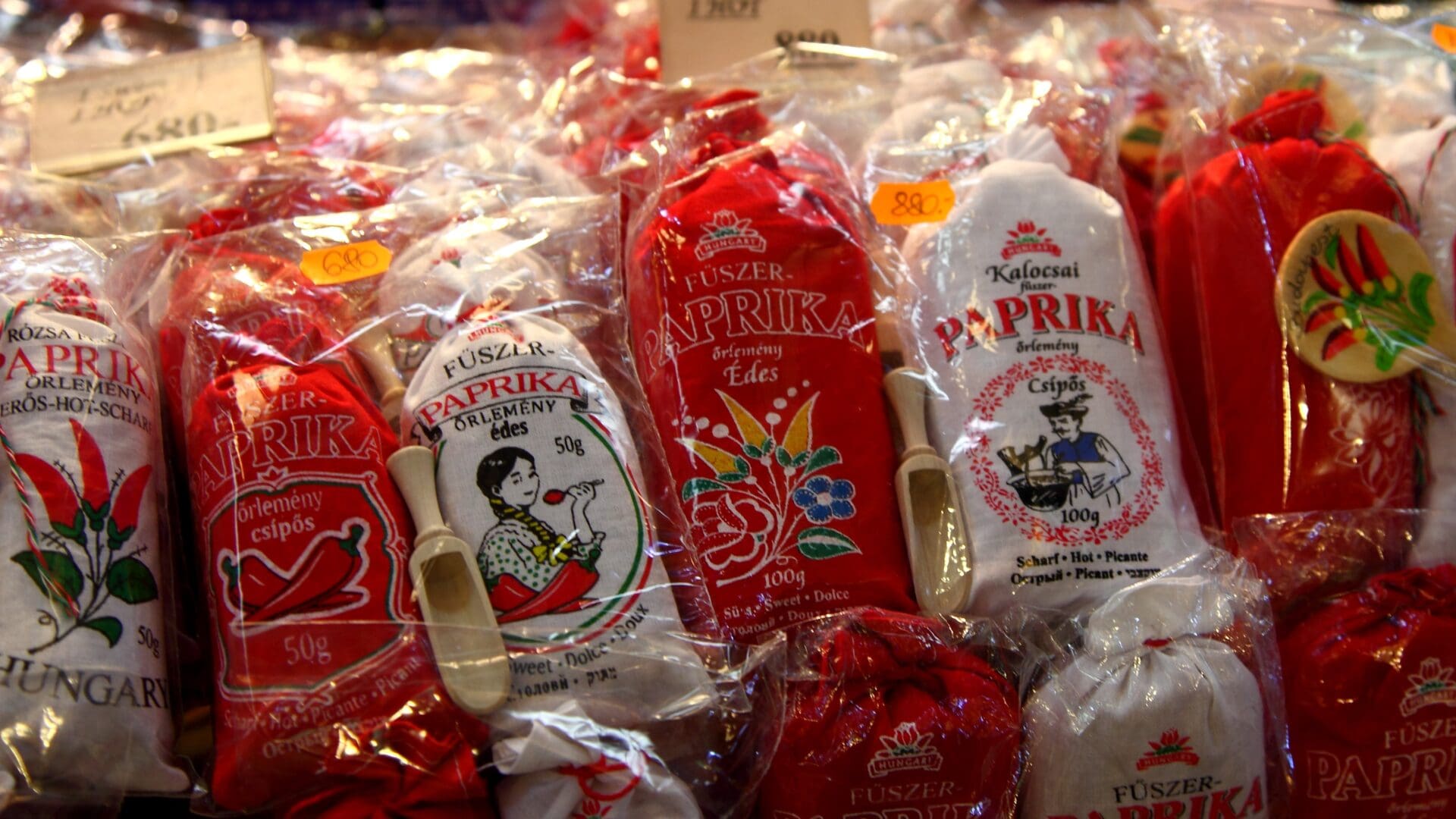Albeit paprika and green peppers are indispensable ingredients of Hungarian cuisine today, it was not until after the discovery of America that they became known in Hungary. With the discovery of the new continent, many new vegetables and plants made their way to the Old World—potatoes, eggplants and chili peppers, just to mention a few. To Hungary, however, hot peppers arrived not from Western Europe, but through Turkish mediation—they were most likely used in barter trade. The first recorded appearance of hot peppers dates back to the 16th century, but at that time
they were used for decorative purposes only in the gardens of the elite.
Aristocrats’ gardens favoured peppers for their colours and various shapes, but the vegetables themselves were believed to be poisonous.
Over the centuries, however, it was discovered that hot peppers can be eaten, and therefore, they started to gain popularity in the country. The invention that truly made peppers a staple ingredient of a number of dishes and that ultimately made Hungary and peppers inseparable was to dry and then grind peppers, turning them into an either sweet or hot spice. The spice became known in the English language as paprika, while the homologous Hungarian word refers to both the spice and the vegetable.
There is historic evidence from the 18th century that Hungarians were already making spice out of pepper at that time, and soon paprika reached widespread popularity across the country. It was in the 1700s that paprika made its way into what became Hungary’s most common and popular, originally peasant, dishes, that are now the hallmarks of Hungarian cuisine: chicken paprikash, sausages, stuffed cabbage and goulash soup. Arguably, part of the popularity of paprika among the poor was due to its cheapness and its ability to serve as a substitute to ground black pepper.
In addition to being used to flavour food, paprika is also added to some dishes to serve as decoration
—a hint of the red spice makes devilled eggs or lardy bread, bread spread with lard, not only tase, but also look delicious.
What added to paprika’s popularity in the country was a belief that emerged in the early 18th century: that the vegetable is not only not poisonous, but actually has a positive effect on health. In 1831, when Hungary was suffering from a cholera epidemic (that claimed the life of the great Hungarian poet Ferenc Kazinczy), paprika became known as a medicine capable of healing the infected. Albeit paprika is not a magical substance, it does have a high concentration of vitamin C in it, therefore, it can indeed have some positive effect on a person’s health and strengthen the immune system. As a matter of fact, peppers have such a high concentration of Vitamin C in it, that Albert Szent-Györgyi, the Nobel Prize winning Hungarian scientist who first isolated vitamin C used capsicum annuum peppers for his experiments that led to the ground breaking discovery.
While today there are sweet versions of paprika as well, back in the day Hungary was famous for hot paprika. Albeit it is likely to be mere fiction, according to a popular legend, the origin of the word ‘paprika’ also related to the hotness of the spice. Allegedly, the word ‘paprika’ comes from ‘paprígató’ or ‘papríkató’, meaning ‘what makes priests weep’. Legend has it that paprika was first grown by monks who wept from its hot taste when they tried to eat it. A more likely origin of the word, however, is the South Slavic term ‘papar’, meaning pepper.
The hotness of traditional Hungarian paprika is preserved in the world-famous Erős Pista. Erős Pista, or Strong Steve, a thick paprika paste, was inscribed on the list of Hungarikums in 2016 and is widely popular with both tourists and Hungarian natives. Hungarian paprika keeps inspiring Hungarian businesses until this day. In 2015, the Spirit of Attila,
a Hungary-produced chilli sauce was awarded the first place at the World Hot Sauce Awards in Louisiana, USA.
The Spirit of Attila was the first non-American sauce to ever win this award. The award-winning sauce, manufactured in the Eastern Hungarian city of Kaba, is made out of two Guinness record holding peppers, ghost chili and Dorset Naga.








